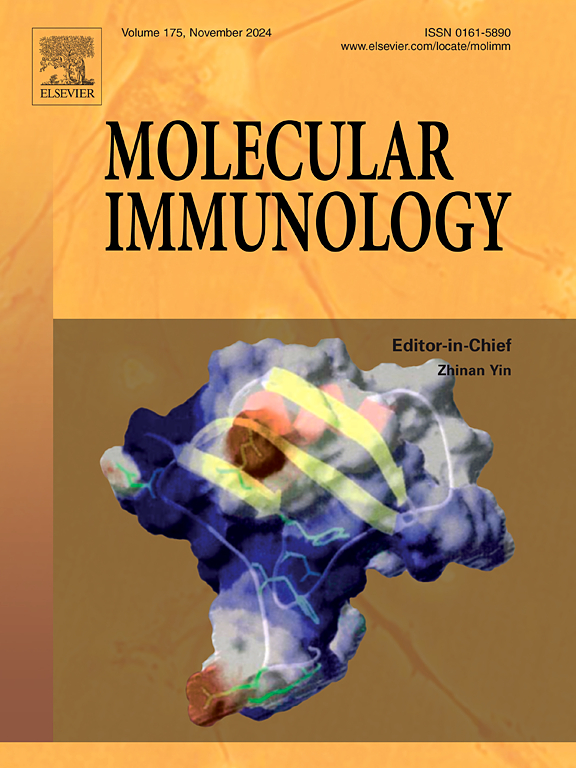Photobiomodulation regulates inflammation and autophagy in spinal cord injury through NLRP3/Caspase-1/IL-1β pathway by targeting TLR2
IF 3.2
3区 医学
Q2 BIOCHEMISTRY & MOLECULAR BIOLOGY
引用次数: 0
Abstract
After spinal cord injury (SCI), peripherally derived macrophages infiltrated the injury area to exert inflammatory effects, causing barriers to the repair of spinal cord injury. Our previous study confirmed that photobiomodulation (PBM) could promote the motor function recovery and inhibit the secretion of inflammatory cytokines after SCI, moreover, PBM also has a role in promoting autophagy, but the mechanism is not clear. Therefore, we aimed to investigate whether PBM promotes autophagy by regulating the inflammatory response of macrophages, which in turn regulates functional repair after SCI. Male C57/BL6 mice were used to prepare a model of clamped spinal cord injury, and PBM irradiation was performed for 28 consecutive days, which showed that motor function of the mice was improved. We observed that autophagy proteins (LC3, Beclin-1 and P62) were inhibited and inflammasome-related proteins (NLRP3, Caspase-1 and IL-1β) expression was significantly enhanced in SCI mice. We analyzed the RNA sequencing (RNA-seq) of SCI, SCI+PBM treated mice in combination with autophagy database. The results showed 25 differentially expressed genes (DEGs). Protein-protein interaction (PPI) network and Hub gene analysis revealed TLR2 as a key molecule in the regulation of autophagy levels by PBM after SCI. We performed preliminary analysis in macrophages cultured in vitro and observed that PBM suppressed the expression of TLR2 and inflammasome-related proteins in M1-type macrophages and promoted the expression of autophagy proteins. Subsequently, we used an agonist of TLR2 (CU-T12–9) to up regulate TLR2 expression and observed that macrophage autophagy was inhibited and inflammatory response was enhanced. After PBM irradiation, the effect of CU-T12–9 was counteracted. Taken together, PBM promotes autophagy and attenuates the inflammatory response by regulating TLR2, a key molecule of autophagy in spinal cord injury.
光生物调节通过NLRP3/Caspase-1/IL-1β途径靶向TLR2调控脊髓损伤的炎症和自噬
脊髓损伤(SCI)后,外周源性巨噬细胞浸润损伤区发挥炎症作用,对脊髓损伤修复造成障碍。我们前期的研究证实,光生物调节(PBM)可以促进脊髓损伤后运动功能的恢复,抑制炎症因子的分泌,此外,PBM还具有促进自噬的作用,但其机制尚不清楚。因此,我们旨在研究PBM是否通过调节巨噬细胞的炎症反应来促进自噬,从而调节脊髓损伤后的功能修复。用雄性C57/BL6小鼠制备夹持性脊髓损伤模型,连续照射28天,小鼠运动功能得到改善。我们观察到脊髓损伤小鼠的自噬蛋白(LC3、Beclin-1和P62)被抑制,炎症小体相关蛋白(NLRP3、Caspase-1和IL-1β)的表达显著增强。结合自噬数据库分析SCI、SCI+PBM处理小鼠的RNA序列(RNA-seq)。结果显示25个差异表达基因(DEGs)。蛋白-蛋白相互作用(PPI)网络和Hub基因分析显示,TLR2是脑脊髓损伤后PBM调节自噬水平的关键分子。我们在体外培养的巨噬细胞中进行初步分析,发现PBM抑制m1型巨噬细胞中TLR2和炎性小体相关蛋白的表达,促进自噬蛋白的表达。随后,我们使用TLR2激动剂(CU-T12-9)上调TLR2表达,观察到巨噬细胞自噬被抑制,炎症反应增强。PBM辐照后CU-T12-9的作用被抵消。综上所述,PBM通过调节TLR2(脊髓损伤中自噬的关键分子)促进自噬,减轻炎症反应。
本文章由计算机程序翻译,如有差异,请以英文原文为准。
求助全文
约1分钟内获得全文
求助全文
来源期刊

Molecular immunology
医学-免疫学
CiteScore
6.90
自引率
2.80%
发文量
324
审稿时长
50 days
期刊介绍:
Molecular Immunology publishes original articles, reviews and commentaries on all areas of immunology, with a particular focus on description of cellular, biochemical or genetic mechanisms underlying immunological phenomena. Studies on all model organisms, from invertebrates to humans, are suitable. Examples include, but are not restricted to:
Infection, autoimmunity, transplantation, immunodeficiencies, inflammation and tumor immunology
Mechanisms of induction, regulation and termination of innate and adaptive immunity
Intercellular communication, cooperation and regulation
Intracellular mechanisms of immunity (endocytosis, protein trafficking, pathogen recognition, antigen presentation, etc)
Mechanisms of action of the cells and molecules of the immune system
Structural analysis
Development of the immune system
Comparative immunology and evolution of the immune system
"Omics" studies and bioinformatics
Vaccines, biotechnology and therapeutic manipulation of the immune system (therapeutic antibodies, cytokines, cellular therapies, etc)
Technical developments.
 求助内容:
求助内容: 应助结果提醒方式:
应助结果提醒方式:


